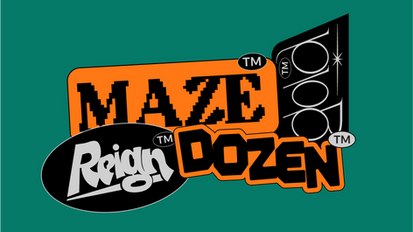Cfb 25 Team Builder Website FAQ
Cfb 25 Team Builder Website Trends
Cfb 25 Team Builder Website
In today’s digital age, having a strong online presence is crucial for businesses and individuals alike. One of the most effective ways to showcase your work and attract potential clients is through a website portfolio. However, creating a website portfolio can be a daunting task, especially if you don’t have any design or coding experience.

Getting Started with Cfb 25 Team Builder Website
Cfb 25 Team Builder Website
Web hosting providers offer various types of hosting plans and services to accommodate the needs of different websites. From shared hosting to dedicated servers, there are several options available for individuals and businesses looking to host their websites online.
Shared hosting is the most popular and affordable type of web hosting. With shared hosting, multiple websites are hosted on the same server, sharing its resources such as CPU, RAM, and storage space. This type of hosting is ideal for small websites with low to moderate traffic. However, shared hosting may not be suitable for websites that require high performance or resource-intensive applications.
VPS hosting, or Virtual Private Server hosting, is a step up from shared hosting. With VPS hosting, websites are hosted on virtual servers that mimic dedicated servers. Each website on a VPS server has its own dedicated resources, such as CPU, RAM, and storage space. This type of hosting is ideal for websites that require more control and flexibility but do not need a dedicated server.
Dedicated server hosting is the most powerful and expensive type of web hosting. With dedicated server hosting, websites have their own physical server dedicated solely to their needs. This type of hosting offers maximum performance, security, and customization options. Dedicated server hosting is ideal for websites with high traffic volumes, e-commerce websites, and large enterprises.
Cloud hosting is a relatively new type of web hosting that utilizes cloud computing technology to host websites on virtual servers. With cloud hosting, websites are hosted across multiple servers, providing scalability and flexibility. Cloud hosting is ideal for websites that experience fluctuating traffic levels or require high availability and uptime.
Managed hosting is a type of hosting service in which the web hosting provider manages and maintains the server infrastructure for the website owner. With managed hosting, users do not have to worry about server maintenance, security updates, or technical issues. This type of hosting is ideal for users who do not have the technical expertise or resources to manage their own servers.
There are several factors to consider when choosing a web hosting provider, such as reliability, speed, security, scalability, and customer support. Reliability is critical for ensuring that your website is always accessible to visitors. Speed is crucial for providing a positive user experience and improving search engine rankings. Security is essential for protecting your website from cyber threats and data breaches. Scalability is important for accommodating the growth of your website and handling increases in traffic. Customer support is vital for assisting with technical issues and ensuring that your website remains online and operational.
In addition to hosting services, web hosting providers often offer additional features and services, such as domain registration, website builders, one-click installation of applications, SSL certificates, email hosting, and backup services. These additional features can enhance the functionality and security of your website and simplify the management of your online presence.
1. Text Editors
One of the most basic tools for web development is a text editor. Text editors are used to write and edit code for websites. There are many different text editors available, each with its own set of features and capabilities. Some popular text editors include Sublime Text, Atom, and Visual Studio Code. These text editors offer features like syntax highlighting, code completion, and easy integration with other tools.
2. Integrated Development Environments (IDEs)
Integrated Development Environments (IDEs) are comprehensive tools that provide everything a developer needs to build websites. IDEs typically include a text editor, debugger, compiler, and other tools for building and deploying websites. Some popular IDEs for web development include IntelliJ IDEA, Eclipse, and NetBeans. These tools are ideal for developers working on complex projects that require advanced features and capabilities.
3. Version Control Systems
Version Control Systems are essential tools for tracking changes to code and collaborating with other developers. Version Control Systems like Git allow developers to track changes to their code, revert to previous versions, and merge code from different developers. Git is a widely used version control system that is easy to learn and offers powerful features like branching and merging.
4. Browser Developer Tools
Browser Developer Tools are built-in tools that allow developers to inspect and debug websites directly in the browser. These tools provide information about the structure, layout, and performance of websites. Browser Developer Tools also allow developers to test and optimize websites for different devices and screen sizes. Popular browser developer tools include Chrome DevTools, Firefox Developer Tools, and Safari Web Inspector.
5. Package Managers
Package Managers are tools that help developers manage dependencies and libraries in their projects. Package Managers like npm (Node Package Manager) and Yarn allow developers to easily install, update, and remove libraries in their projects. Package Managers also help developers manage different versions of libraries and ensure that all dependencies are up to date.
6. Task Runners
Task Runners are tools that automate repetitive tasks in the web development process. Task Runners like Gulp and Grunt allow developers to automate tasks like minification, concatenation, and compiling code. Task Runners save time and effort by streamlining the development process and making it easier to build and deploy websites.
7. CSS Preprocessors
CSS Preprocessors are tools that extend the functionality of CSS by adding features like variables, mixins, and nesting. CSS Preprocessors like Sass and Less help developers write more organized and maintainable CSS code. These tools make it easier to style websites and ensure consistency across different pages and components.
8. Code Editors
Code Editors are specialized tools for writing and editing code. Code Editors like CodePen and JSFiddle provide a lightweight and easy-to-use environment for writing HTML, CSS, and JavaScript code. Code Editors are ideal for quick prototyping and testing code snippets before integrating them into larger projects.
9. Performance Monitoring Tools
Performance Monitoring Tools help developers identify and fix performance issues on websites. Tools like Lighthouse, PageSpeed Insights, and WebPageTest analyze websites and provide recommendations for improving performance. Performance Monitoring Tools help developers optimize websites for speed, responsiveness, and user experience.
10. Cross-Browser Testing Tools
Cross-Browser Testing Tools help developers ensure that websites look and work correctly in different web browsers. Tools like BrowserStack and CrossBrowserTesting allow developers to test websites on multiple browsers and devices simultaneously. Cross-Browser Testing Tools help developers identify and fix compatibility issues that may arise when users access websites from different browsers and devices.

Cfb 25 Team Builder Website
Cfb 25 Team Builder Website
In today’s digital age, having a visually appealing and user-friendly website is crucial for the success of any business. A well-designed website can help attract new customers, build credibility, and increase conversion rates. However, designing a website is not as simple as it may seem. It requires a strategic and systematic approach to ensure that the final product meets the needs and expectations of both the business and its target audience. In this article, we will discuss the website design process in detail, outlining the key steps involved in creating a successful website.
Step 1: Define the Purpose and Goals
The first step in the website design process is to clearly define the purpose and goals of the website. This involves identifying the target audience, understanding their needs and preferences, and determining the desired outcomes for the website. For example, is the website meant to generate leads, drive sales, provide information, or showcase products and services? By having a clear understanding of the purpose and goals of the website, you can better tailor the design and content to meet these objectives.
Step 2: Conduct Research
Once the purpose and goals of the website have been defined, the next step is to conduct research. This involves analyzing the competition, researching industry trends, and gathering insights into the preferences and behaviors of the target audience. By conducting thorough research, you can gain a better understanding of what works and what doesn’t in your industry, helping you make informed design decisions.
Step 3: Create a Wireframe
After conducting research, the next step in the website design process is to create a wireframe. A wireframe is a visual representation of the layout and structure of the website, showing the placement of various elements such as navigation menus, headers, footers, and content sections. Creating a wireframe allows you to plan the overall design and functionality of the website before moving on to the visual design phase.
Step 4: Design the Visual Elements
Once the wireframe has been finalized, the next step is to design the visual elements of the website. This involves creating a visually appealing and consistent design that reflects the brand identity and resonates with the target audience. Elements such as color scheme, typography, imagery, and layout are carefully considered to create a cohesive and attractive design that conveys the desired message and engages users.
Step 5: Develop the Website
After the visual design has been approved, the next step is to develop the website. This involves coding the design into a functioning website using HTML, CSS, and other programming languages. During the development phase, the website is tested for functionality, responsiveness, and compatibility across different devices and browsers to ensure a seamless user experience.
Step 6: Test and Optimize
Once the website has been developed, it is essential to test and optimize its performance. This involves conducting usability tests to identify any usability issues, testing load times to ensure fast page speeds, and optimizing the website for search engines to improve visibility and accessibility. By testing and optimizing the website, you can ensure that it meets the needs and expectations of users, leading to better engagement and conversions.
Step 7: Launch and Monitor
The final step in the website design process is to launch the website and monitor its performance. This involves deploying the website to a live server, promoting it to the target audience, and tracking key metrics such as traffic, engagement, and conversions. By monitoring the performance of the website, you can identify areas for improvement and make informed decisions to optimize its effectiveness over time.


